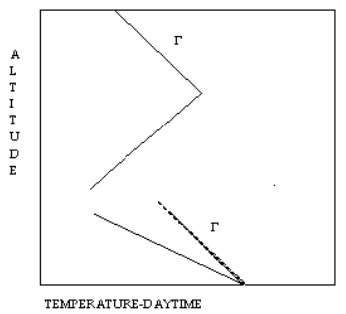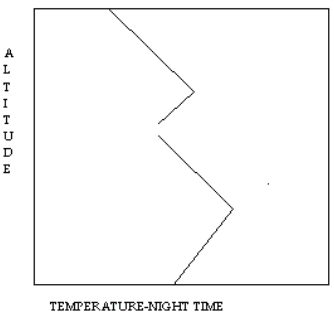| Subsidence Inversions |
|
Unlike radiation inversions these are relatively long lived, summertime phenomena. They may last for months in some parts of the world but are rarely so long lived in the UK. They are associated with high pressure air masses in which air is descending under the influence of cyclic atmospheric processes. As subsiding air falls it is compressed and thus gets warmer through being compressed. This compressive heating will warm the air according to: |
|
Where z represents the altitude. This can result in compressive heating of descending air to temperatures higher than the air below, whose temperature is dictated by ground conditions. The result is an inversion, which can be located from several hundred meters to several thousand meters from the surface. The situation can become very complex. Subsiding air is warming yet its moisture content stays the same thus its relative humidity decreases and Cloud formation is thus inhibited. Clear skies warm the earth's surface creating superadiabatic conditions at very low altitudes during the day. This produces good atmospheric mixing in the lower layers. But at night the earth's surface cools quickly, producing a radiation inversion close to the ground. |
 |
 |